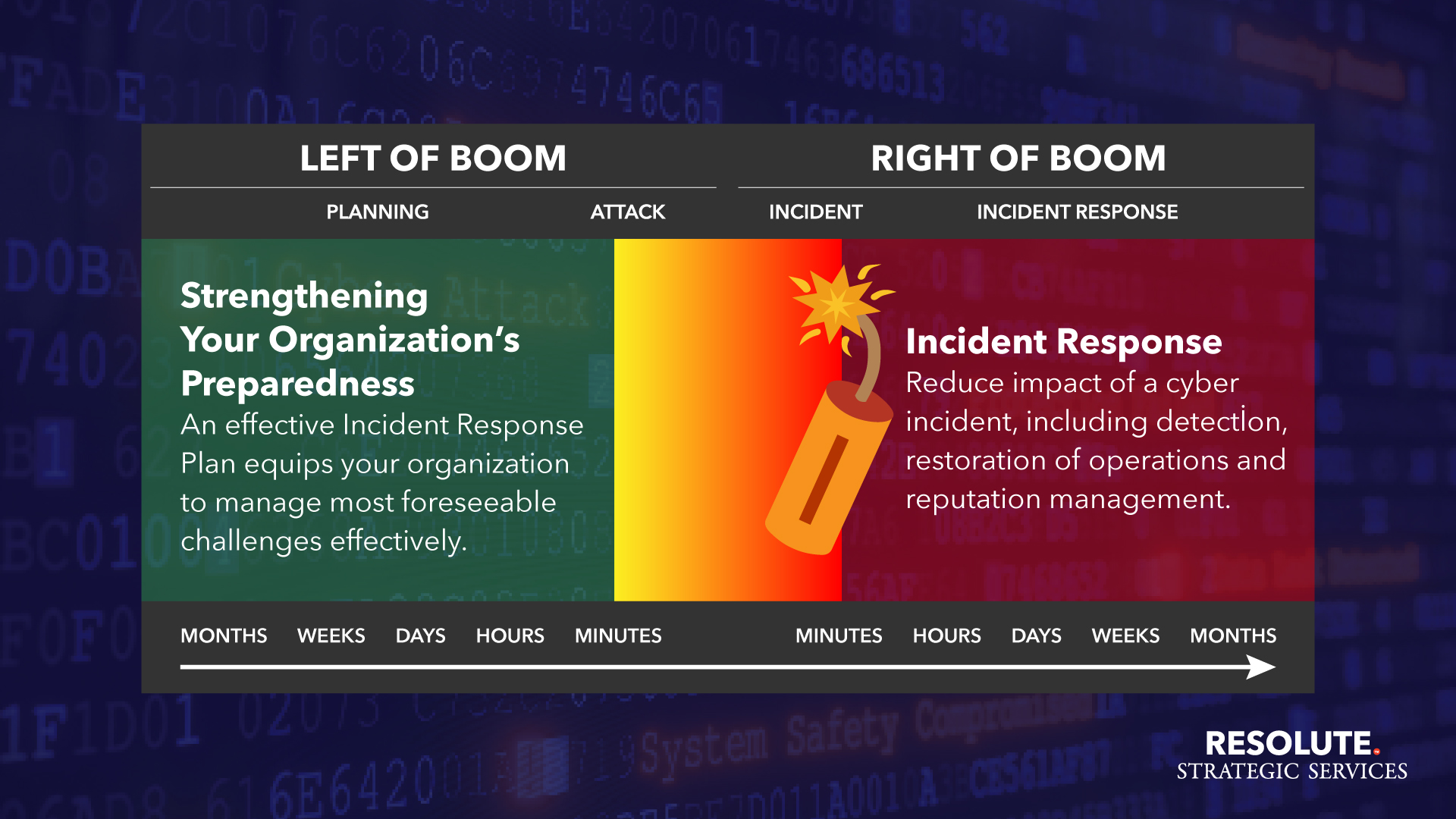
Left of Boom – The Importance of Planning for a Cyber Incident
Welcome to the digital age, where cyber incidents lurk around every virtual corner, posing significant threats to organizations worldwide. Whether it’s a data breach, ransomware attack, or any other cybercrime, the fallout can be brutal, causing financial havoc and tarnishing reputations. But fear not, proactive planning is our knight in shining armor, safeguarding organizational resilience.
So, what exactly constitutes a cyber incident? You’ve likely stumbled upon headlines or received those dreaded notification letters detailing security breaches. In essence, a cyber incident encompasses anything that jeopardizes the confidentiality, integrity, or availability of information or system operations. From unauthorized data access to malware mayhem, these incidents pack a punch, inflicting data loss, financial woes and even regulatory penalties.
Now, let’s talk about being “left of boom.” In the world of incident response, we’re all about proactive planning, laying the groundwork before disaster strikes. Think of it as getting your umbrella before the downpour. Proactive planning isn’t just a good idea; it’s essential for several reasons.
First off, it’s like putting on a pair of cyber-specs to spot risks. By conducting a risk assessment, organizations can pinpoint potential threats and vulnerabilities lurking in their systems. Armed with this knowledge, they can beef up security measures, reducing the likelihood of an incident.
But what about when the inevitable happens? The reality is a disaster is likely to occur and when it does, you’ll understand the importance of having a comprehensive incident response plan in place and the instrumental role it will play in saving the day. With clear procedures, designated roles and polished communications materials, an incident response plan helps organizations leap into action, minimizing the fallout from a cyber incident.
Moreover, proactive planning isn’t just about bouncing back; it’s about bouncing back better. By fine-tuning response strategies, organizations can emerge from an incident stronger and more resilient, dodging long-term damage to their operations and reputation.
And let’s not forget the regulatory spotlight. Many regulations, like GDPR, demand organizations have a plan in place to tackle cyber incidents. Failing to comply can result in hefty financial blows. So, it’s not just about protecting data; it’s about protecting the bottom line.
Now, let’s roll up our sleeves and get down to business. How do we proactively plan against a cyber incident? Here’s the lowdown:
Conduct a Risk Assessment
It’s like playing detective, sniffing out vulnerabilities in your systems. But remember, it’s not just a tech issue; it’s a company-wide concern. Get everyone involved, from IT wizards, communication gurus and legal eagles.
Develop an Incident Response Plan
Think of it as your playbook for when things hit the fan. Define procedures, roles and yes, don’t forget those crucial communications materials. Everyone needs to know their part in the cyber-drama.
Train Staff
Equip your team with the knowledge they need to tackle cyber mayhem. From the IT department to the front desk, everyone plays a role in the cyber-defense squad.
Test Test & Test
Practice makes perfect. Regular tabletop exercises ensure everyone knows the drill and the process helps identify any gaps in the plan.
Review and Update
Like a fine wine, your plan gets better with age. Keep it fresh by reviewing and updating it regularly. After all, the cyber landscape is always evolving and you want to stay one step ahead.
So, there you have it folks. Left of boom, proactive planning is your secret weapon in the fight against cyber villains. With a solid plan in place, you can weather any digital storm that comes your way. So, what are you waiting for? Get planning!
https://www.linkedin.com/pulse/left-boom-importance-planning-cyber-incident-david-smolensky-7xidc
